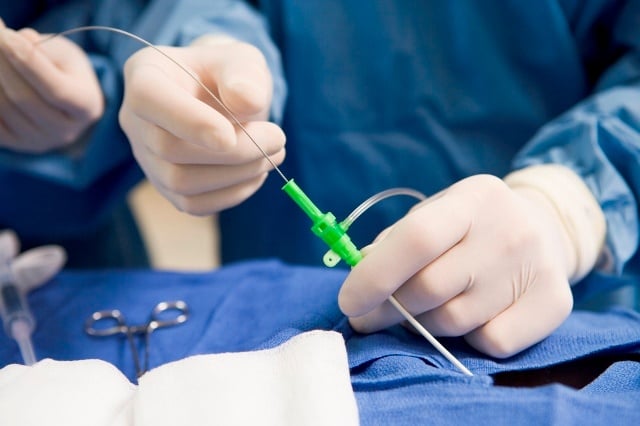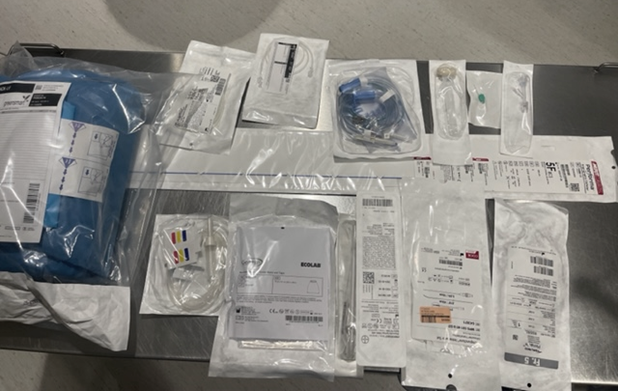"Time is Brain" - A Lesson from Cath Lab Veterans
In our articles, we often focus on doctors and nurses, but there are so many people in other settings that support life changing procedures. This article is for them, with a specific focus on Registered Radiologic Technologists (RT), and the important role they play.
I recently had the opportunity to sit down with Jennifer Blinkhorn, Neurology Charge Tech—RT(R)(VI), at Spectrum Health Hospitals in Grand Rapids, Michigan, and Molly Truszkowski, Cardiology Tech—RT(R) at Holland Hospital in Holland, Michigan. Both Jennifer and Molly have spent 10+ years working in various Interventional Radiology (IR) and Catheterization (Cath) labs around the United Sates. During our discussions, we compared their experiences while working at various hospitals, the differences that exist in Cath lab and IR, and how medical packaging must perform across different procedures.

Differences Between IR and the Cath Lab
Procedures performed in the Cath lab and the IR both use x-ray technology to guide a needle into the body to access a particular organ. A guidewire or catheter is then inserted through the needle to treat the impacted area. While the technology is the same, the Cath lab is responsible for procedures impacting the heart and vascular system, performing procedures like balloon angioplasty, heart catheterization, and stent implantation. The IR is responsible for the rest of the body, treating blockages like aneurysms, strokes, and tumors.
Techs, like Jen and Molly, are often required to rotate between departments and are well versed on procedures for the entire body, from head to toe. This also means that they must be able to differentiate between the various styles of guidewires, catheters, and other medical devices used in each procedure.
Differences Among Hospitals
When I asked Jen and Molly about their number one concern when entering a new case, they looked at each other and in unison said, “Do we have everything we need?!” As one might guess, the biggest difference when working in the Cath or IR lab at various hospitals is the supply. RTs oversee gathering and laying out the necessary supplies before each case. This includes understanding each doctor’s preferences, but more importantly, ensuring that everything is on the shelf and ready to use. Given the complexities of today’s supply chain, this is a bigger challenge (and more time consuming) than ever before.
Products used for cases can not only differ between health systems, but between hospitals in the same health system. Within large health systems, for example, Techs are often required to alternate between hospitals from day-to-day. When you’re traveling between sites, working with 15+ doctors, this is a lot to coordinate.

Figure 1: Products pre-selected for a Neurology case in the IR. If the team must intervene, approximately double the products and thus double the packaging are used.
Medical Packaging in the Cath Lab and IR
There is an old adage in the Cath and IR lab that goes, “tissue is the issue.” This has now been adapted to “time is brain.” Either way, whether you’re treating a heart attack or a stroke, time is of the essence. While there are differences in the devices needed, the need to access the device quickly and safely, and keep the table organized during the procedure is the same.
When Techs are alerted to a stroke, for example, the team has 90 minutes from the time a patient comes through the door to the time a balloon is deployed to treat the blockage. If the patient is being transferred from another hospital, the clock starts earlier. This short period does not allow a lot of time to ensure the proper devices are on hand, the room is set up, and the team is in place. Packaging can’t be the problem. Once in the room, it’s common to have a variety of sizes of stents and guidewires on the table. It can be difficult to keep the sizes separated, keep them from rolling off the table, and maintain sterility. Techs will often resort to writing on surgical towels to separate the devices. When asked, Jen and Molly both agreed that this is where packaging could help. Recoiling guidewires, stents, and catheters in packaging like in Oliver’s Dispenser Integrated System Kit, and being able to write on the sterile package, would maintain a much more organized table. Having inflation, burst, and/or flush rates printed on the sterile secondary packaging would also allow the team to remember these frequently referenced rates and more quickly treat the patient.
Same End Goal
RTR Techs have a lot to remember. They not only know the various procedures and doctor preferences, but they must also source and supply the appropriate products needed to perform the procedure. Despite these everyday challenges, their compassion for the patient remains their number one priority. Thank you RTRs for the very important jobs you do!
To learn more about the differences in packaging between the Emergency Room and Operating Room, visit our blog post here.


.webp)
